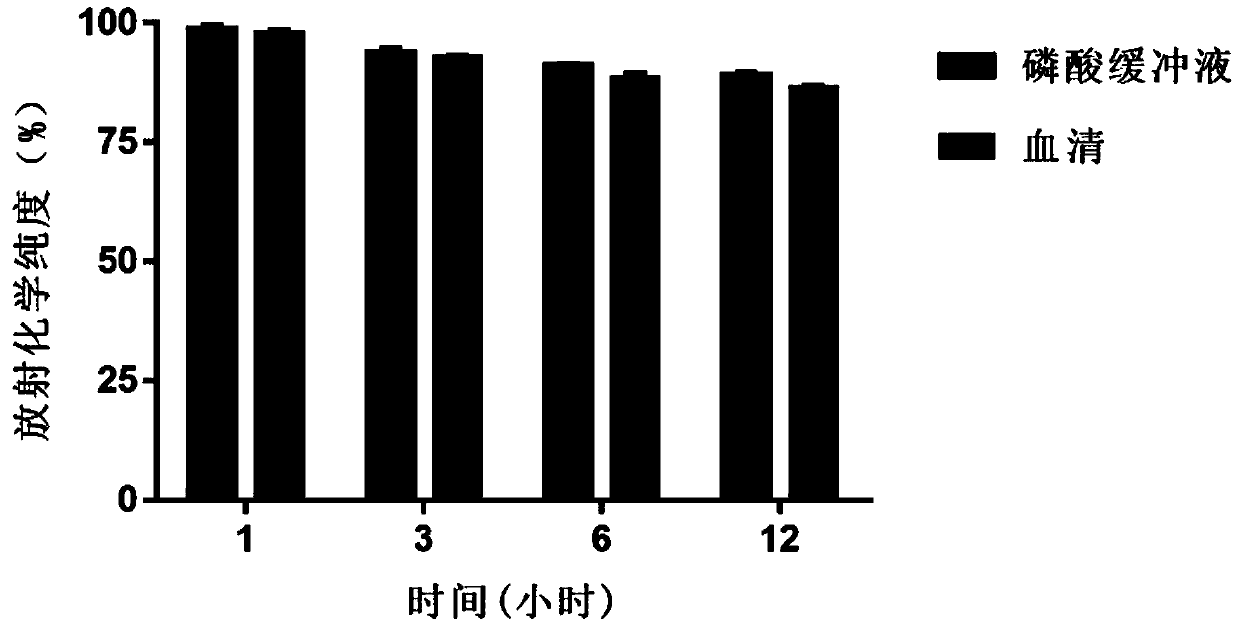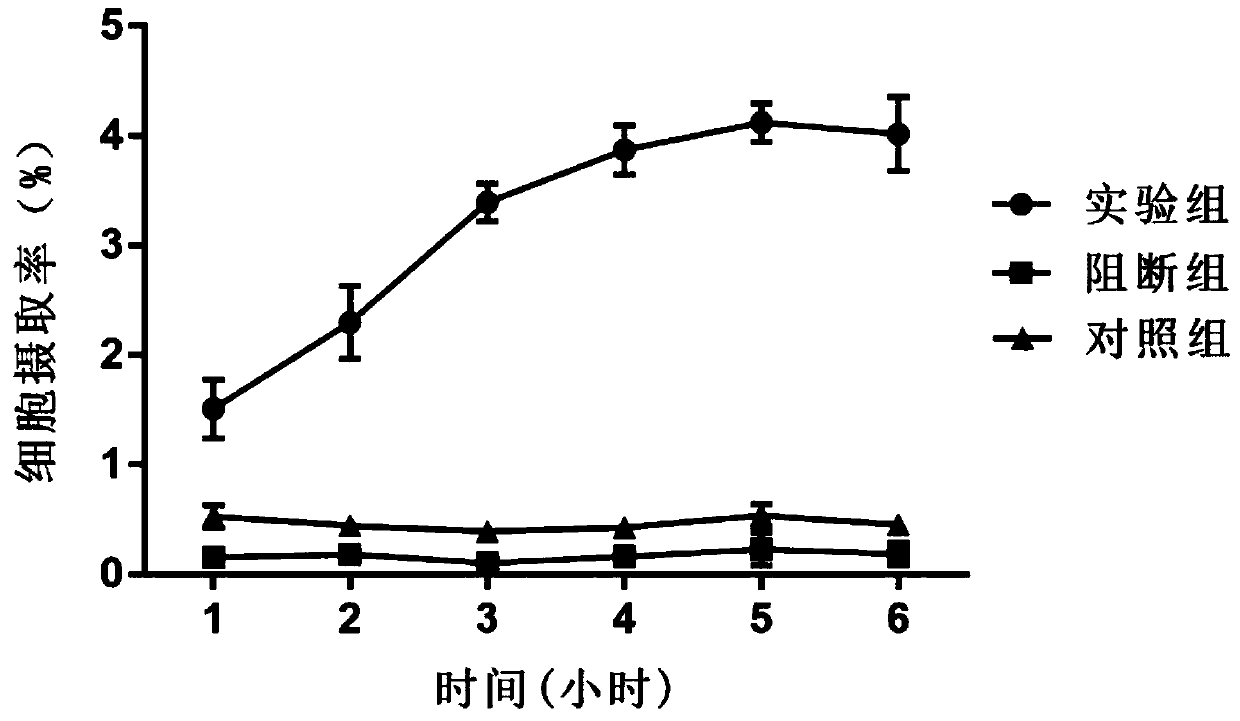Preparation method of nuclide molecular probe targeting CD4 receptor and application of nuclide molecular probe serving as heart transplant rejection reaction imaging agent
A molecular probe and receptor technology, applied in the fields of radiochemistry and clinical nuclear medicine, can solve the problems of insufficient image resolution, poor specificity, and low diagnostic sensitivity, and achieve high sensitivity, high specificity, and good affinity.
- Summary
- Abstract
- Description
- Claims
- Application Information
AI Technical Summary
Problems solved by technology
Method used
Image
Examples
Embodiment 1
[0042] A.zeba desalting column (Thermo scientific, USA) was used to process CD4 monoclonal antibody:
[0043] 1. Remove the bottom plug and top cap of the desalting column, put it into a 1.5mL centrifuge tube, centrifuge at 1500×g for 1min, and discard the storage solution;
[0044] 2. Add 300 μL 1×modification buffer (modification buffer, Solulink, USA), centrifuge at 1500×g for 1 min, and repeat three times;
[0045] 3. Put the desalting column in a new centrifuge tube, add CD4 monoclonal antibody (150ug, 1nmol) to the center of the resin, centrifuge at 1500×g for 2min, and collect the sample;
[0046] b. 99m Tc-labeled CD4 (leukocyte differentiation antigen 4) monoclonal antibody:
[0047] 1. Weigh SHNH and dissolve it in anhydrous DMSO (dimethyl sulfoxide) (10ug / μL), take 4μL (140nmol) and mix it with the treated antibody, and place it on a shaker at 4°C in the dark to react overnight;
[0048] 2. The reaction product was removed by Zeba desalting column to remove exces...
Embodiment 2
[0078] A. Mix leukocyte differentiation antigen 4 monoclonal antibody with 6-hydrazinonicotinoyl succinimide hydrochloride solution, shake at 4°C and react in the dark;
[0079] 6-hydrazinonicotinoylsuccinimide hydrochloride is dissolved in dimethyl sulfoxide solution to form 6-hydrazinonicotinoylsuccinimide hydrochloride solution,
[0080] The concentration of 6-hydrazinonicotinoylsuccinimide hydrochloride in the 6-hydrazinonicotinoylsuccinimide hydrochloride solution is 10 mg / ml;
[0081] The molar ratio of 6-hydrazinonicotinoylsuccinimide hydrochloride solution to leukocyte differentiation antigen 4 monoclonal antibody is 10:1;
[0082] B. The 6-hydrazinonicotinamide-leukocyte differentiation antigen 4 monoclonal antibody obtained in the extraction reaction,
[0083] C. Mix 6-hydrazinonicotinamide-leukocyte differentiation antigen 4 monoclonal antibody with N-tris(hydroxymethyl)methylglycine, stannous chloride and technetium,
[0084] The concentration of N-tris(hydroxyme...
Embodiment 3
[0089] A. Mix leukocyte differentiation antigen 4 monoclonal antibody with 6-hydrazinonicotinoyl succinimide hydrochloride solution, shake at 5°C and react in the dark;
[0090] 6-hydrazinonicotinoylsuccinimide hydrochloride is dissolved in dimethyl sulfoxide solution to form 6-hydrazinonicotinoylsuccinimide hydrochloride solution,
[0091] The concentration of 6-hydrazinonicotinoylsuccinimide hydrochloride in the 6-hydrazinonicotinoylsuccinimide hydrochloride solution is 20 mg / ml;
[0092] The molar ratio of 6-hydrazinonicotinoylsuccinimide hydrochloride solution to leukocyte differentiation antigen 4 monoclonal antibody is 30:1;
[0093] B. The 6-hydrazinonicotinamide-leukocyte differentiation antigen 4 monoclonal antibody obtained in the extraction reaction,
[0094] C. Mix 6-hydrazinonicotinamide-leukocyte differentiation antigen 4 monoclonal antibody with N-tris(hydroxymethyl)methylglycine, stannous chloride and technetium,
[0095] The concentration of N-tris(hydroxyme...
PUM
| Property | Measurement | Unit |
|---|---|---|
| purity | aaaaa | aaaaa |
Abstract
Description
Claims
Application Information
 Login to View More
Login to View More - R&D
- Intellectual Property
- Life Sciences
- Materials
- Tech Scout
- Unparalleled Data Quality
- Higher Quality Content
- 60% Fewer Hallucinations
Browse by: Latest US Patents, China's latest patents, Technical Efficacy Thesaurus, Application Domain, Technology Topic, Popular Technical Reports.
© 2025 PatSnap. All rights reserved.Legal|Privacy policy|Modern Slavery Act Transparency Statement|Sitemap|About US| Contact US: help@patsnap.com



